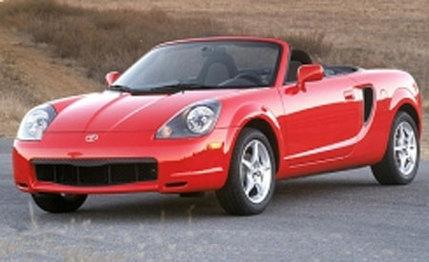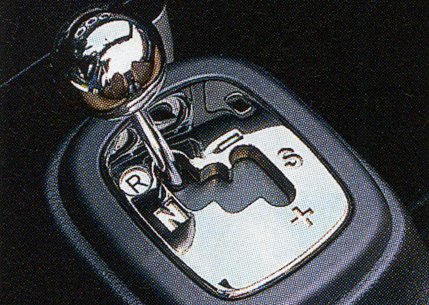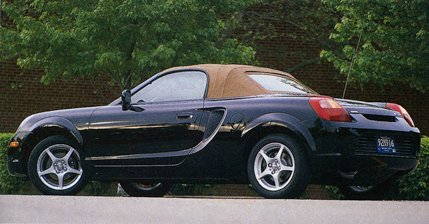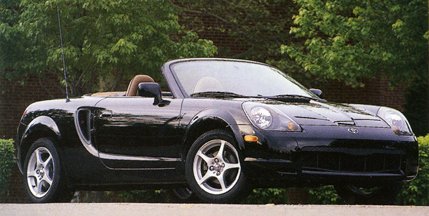
 Short Take Road Test
Short Take Road Test
One expects high-tech F1-style paddle shifting from Ferrari and Alfa Romeo, and rallylike sequential manual shifting in a BMW M3 comes as no surprise. But what about an electrohydraulically automated manual from Toyota?
Yep, Toyota now offers a five-speed manual in the MR2 Spyder that you shift using buttons on the steering wheel or by bumping the transmission selector on the center console, and without depressing a clutch pedal. Both controls initiate a sequence in which the throttle is closed, the clutch is disengaged, and the shift mechanism is activated. On downshifts — as in Ferrari's $155,000 360 Modena F1 — the system provides a blip of power to match engine and transmission speeds for seamless events.
And we can report that the system works pretty flawlessly, although cautiously. Unlike the F1 system in expensive Ferraris, where you're allowed to exploit an ultra-high-performance strategy that permits high revving of the engine before the clutch is dropped for a smoking wheelspin launch, Toyota's mechanism puts the emphasis on durability.


Thus, even with the accelerator floored, the launch is conducted gently, with just enough revs dialed up to allow a gentle clutch engagement. Then, once under way, the shifts are made slowly and deliberately. Although this isn't a problem during normal or even sporty driving, the shifts seem agonizingly slow at the drag strip. Any one of our test drivers could stab the pedals and snap the lever through the gate in half the time.
So the 0-to-60-mph time — at 8.2 seconds — is 1.4 seconds slower than the last MR2 we tested. The quarter-mile time of 16.2 seconds (versus 15.6 seconds) is similarly prolonged.
But don't write off the MR2 SMT just yet. The car is great fun to drive, engendering many of the same F1-style fantasies you get in the Ferrari. You can brake deep into bends while pressing buttons for perfectly timed downshifts that match wheel and engine speeds exactly. That's important if you plan to drive very close to the limit of adhesion, where a misstep in the pedal department of a car with a normal manual transmission can produce a chirp of rear-wheel lockup — not a good thing when driving a sensitive mid-engine car near that limit.


Of course, the MR2 is a little more forgiving than the race cars for which these automated manual transmissions were devised, but you get the picture. And in the interests of long and trouble-free operation, Toyota can argue that its SMT system will probably extend clutch life, being better able to match throttle inputs and clutch-engagement rates than many owners can.
It is also pretty cool to be able to sit in slow-moving traffic and have the hydraulic leg do all the clutch work. As long, of course, as you remember to pop the console lever into neutral during long periods at idle. It is, after all, still a conventional diaphragm clutch, and its throw-out bearing will thank you for a little rest.
If there's a single aspect of Toyota's system that remains incomprehensible to us, it's the lack of a fully automatic feature. After all, Toyota's SMT mechanism requires an elaborate computerized control system to handle the delicate matter of coordinating clutch engagements and throttle inputs in a way that approaches a seamless flow of power.


So how hard could it be to incorporate the same actions at predetermined speeds and throttle positions without the driver's say-so? It would be perfect when caught in heavy traffic, say, or when talking on a cell phone, or any time the driver would prefer not to have to think about pushing buttons.
As it is, the driver has to initiate every shift. It's not that big a deal, since that's what you're called on to do with any conventional manual-transmission car anyway, but you know, we're paid to gripe. On the plus side, the MR2's selector is as intuitive as any we've seen, readily understood by parking valets with minimal coaching, and fuel economy is identical to that of the low-tech manual.
With or without the sequential manual transmission, the MR2 is a charming little two-seat, mid-engine roadster. Push-button shifting at a real-world price of just $780 can only add to its allure.